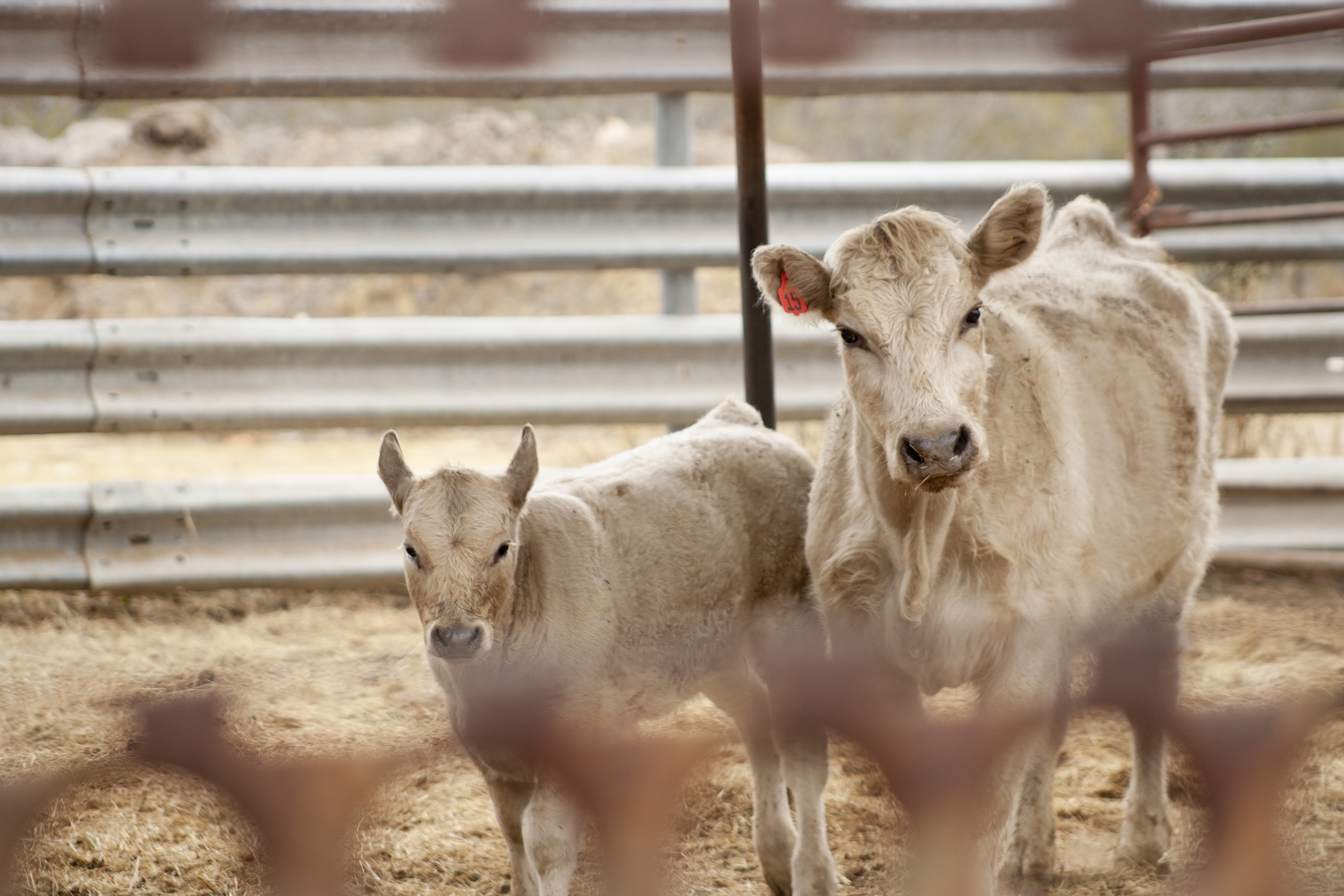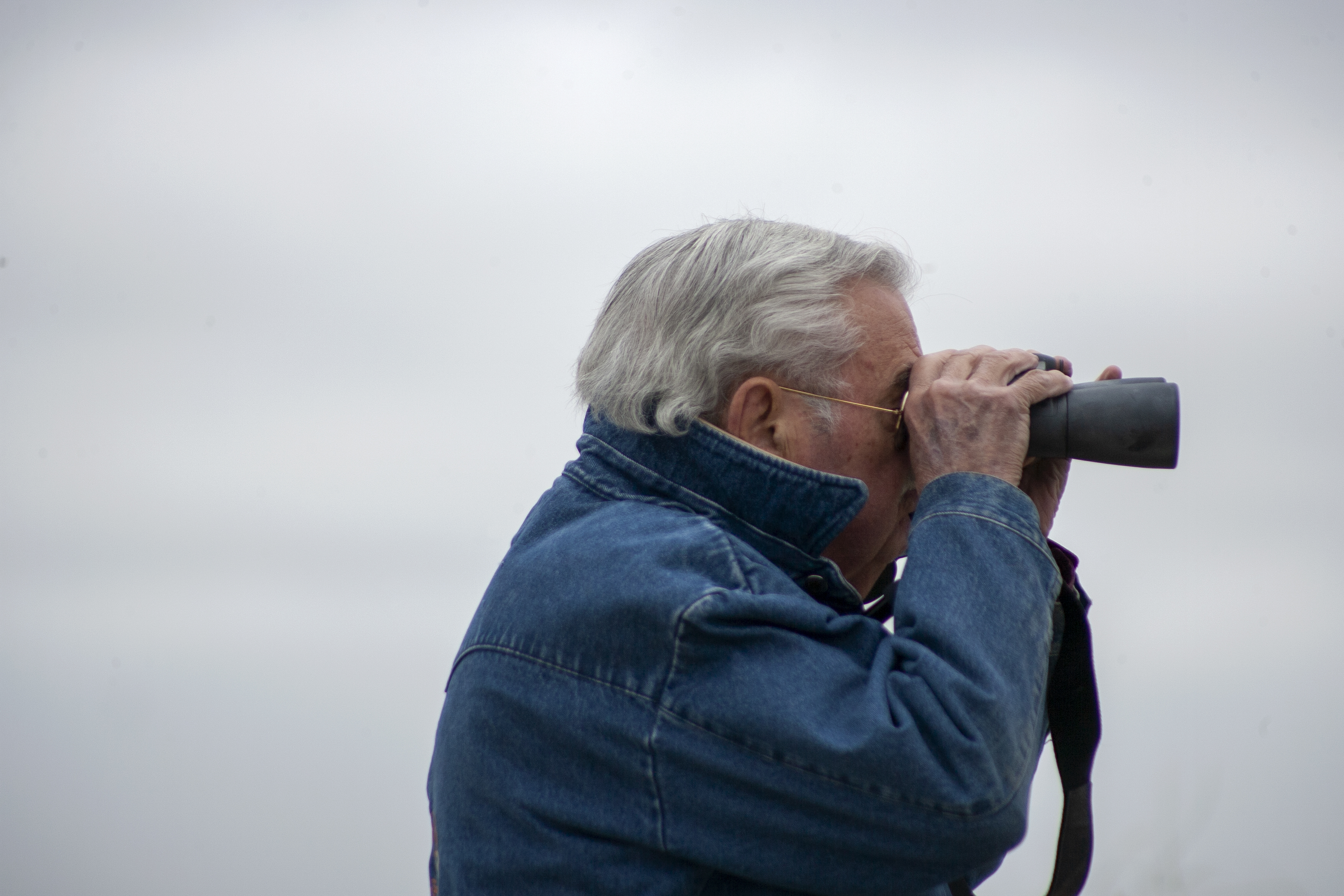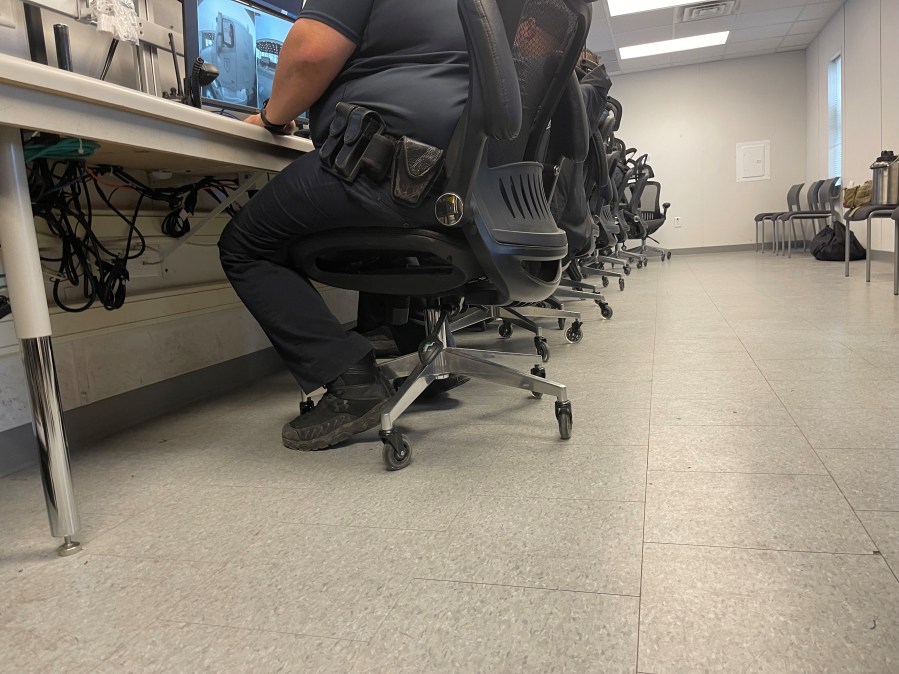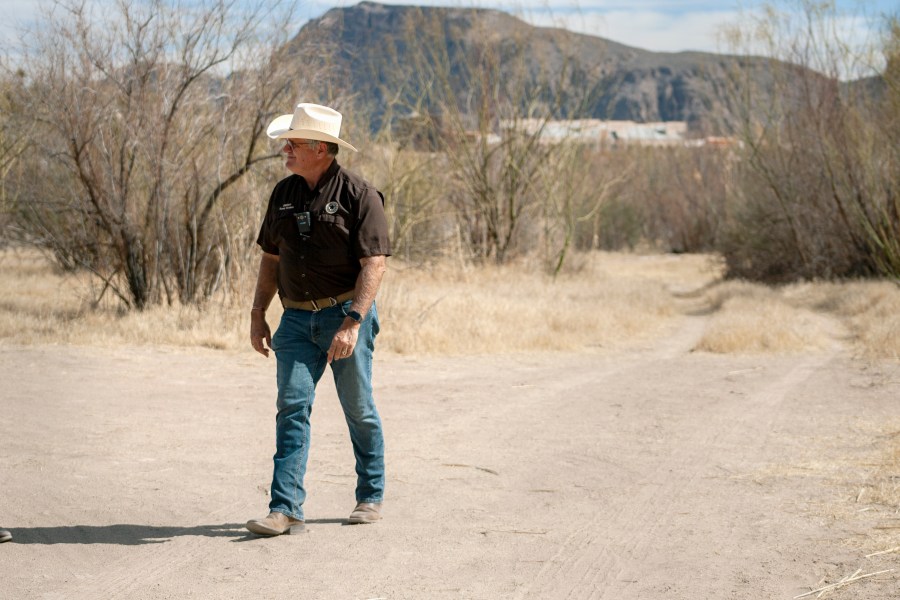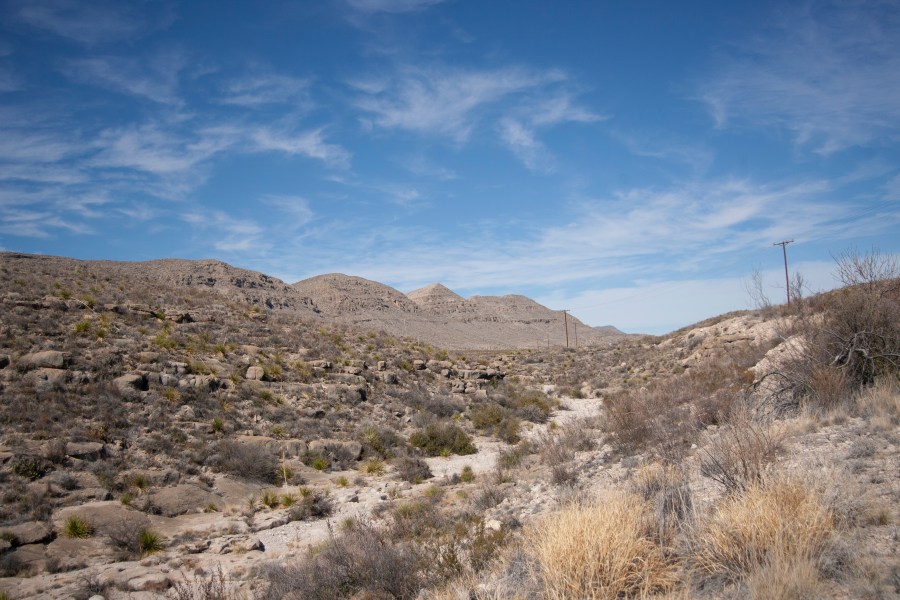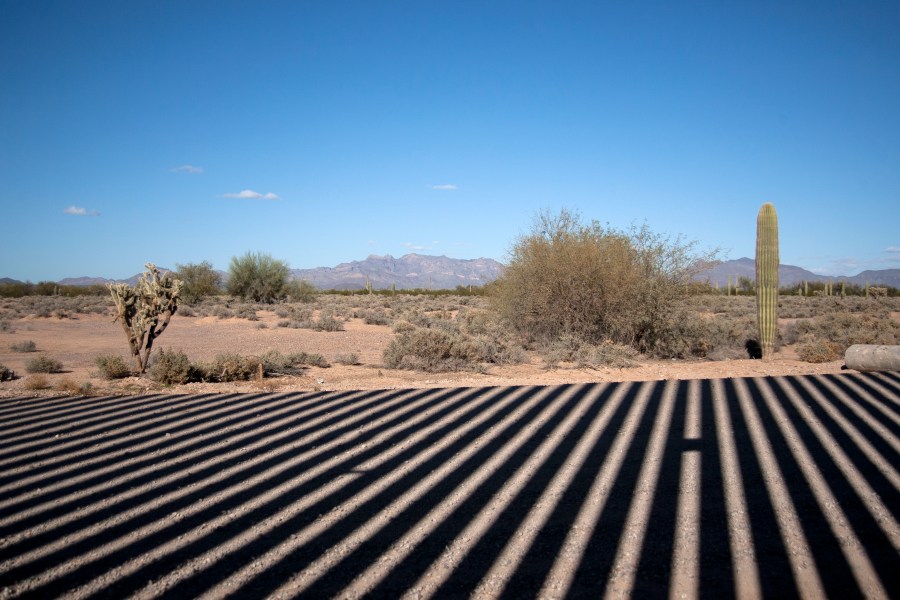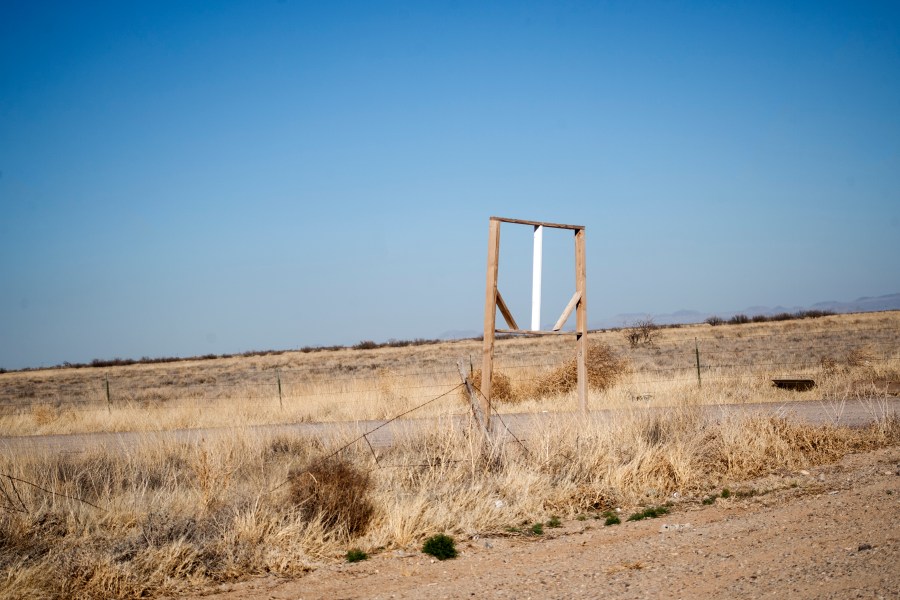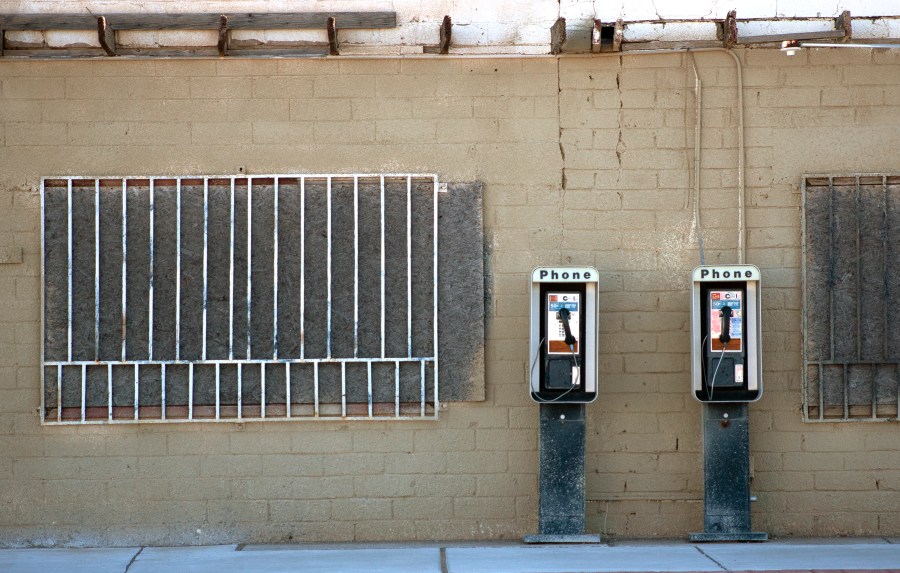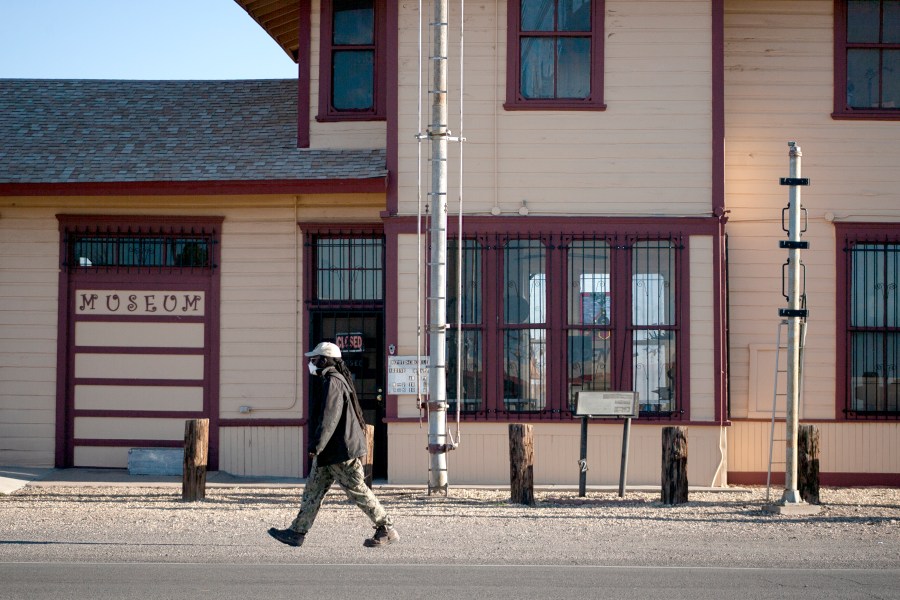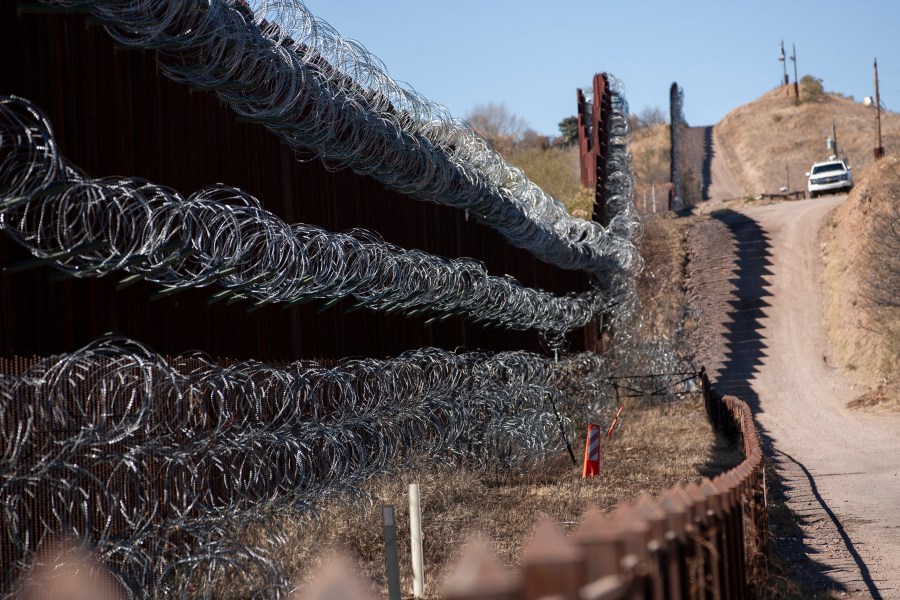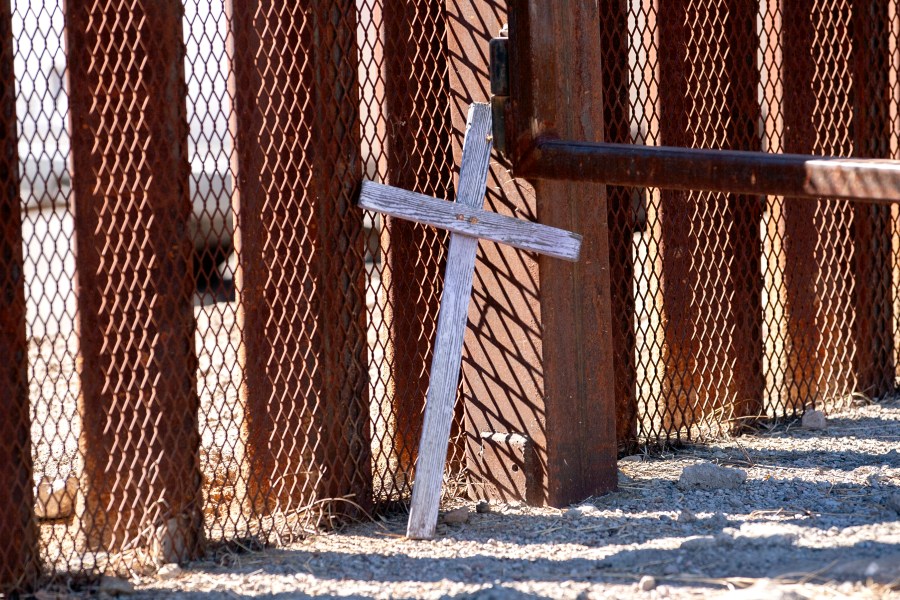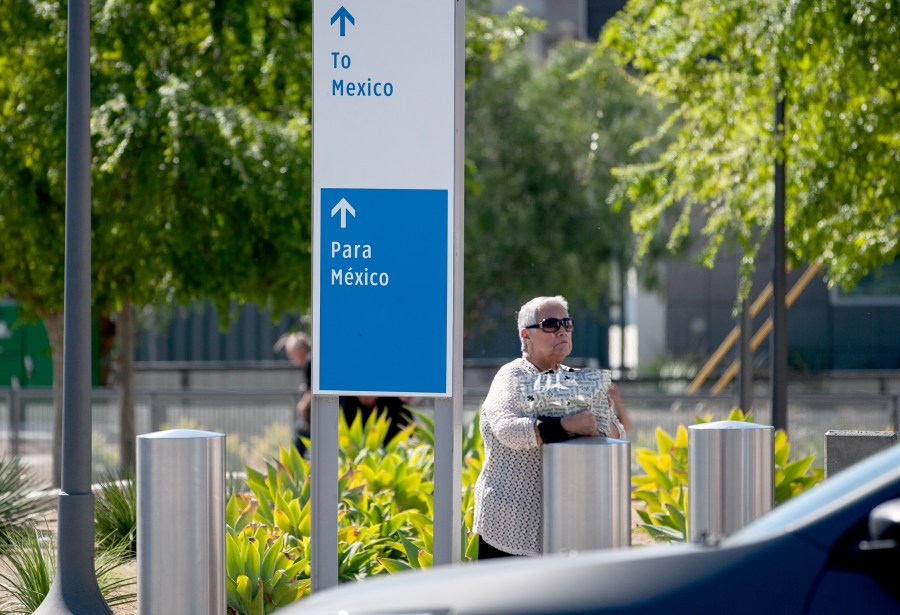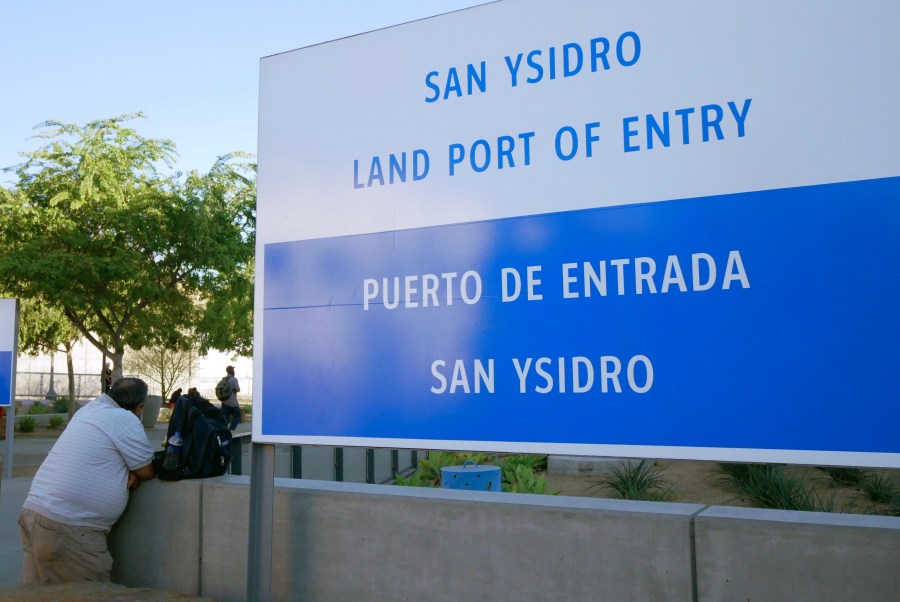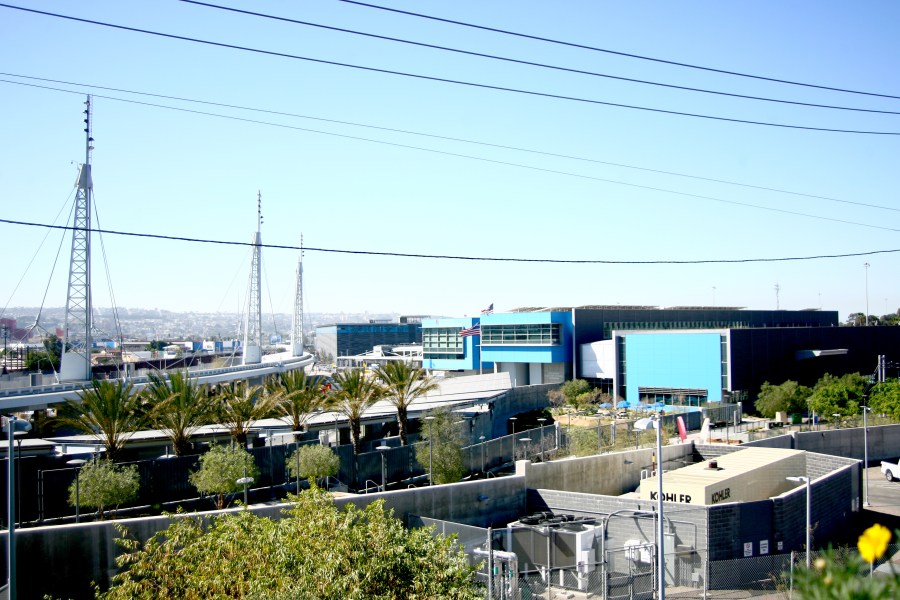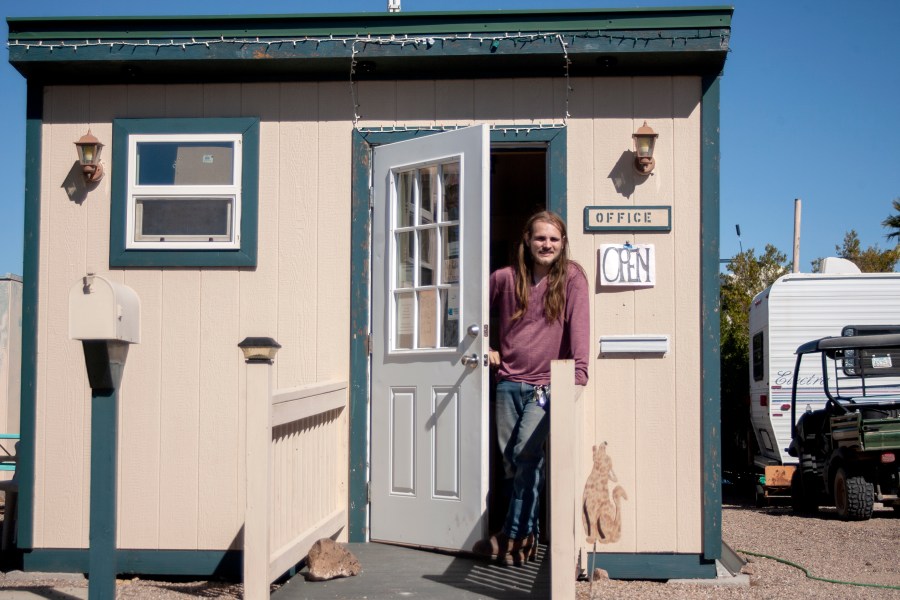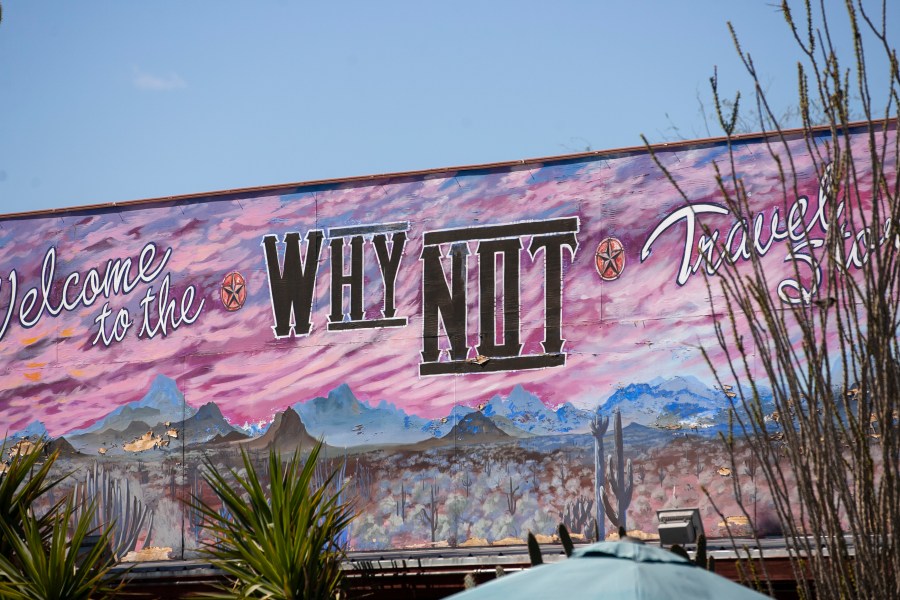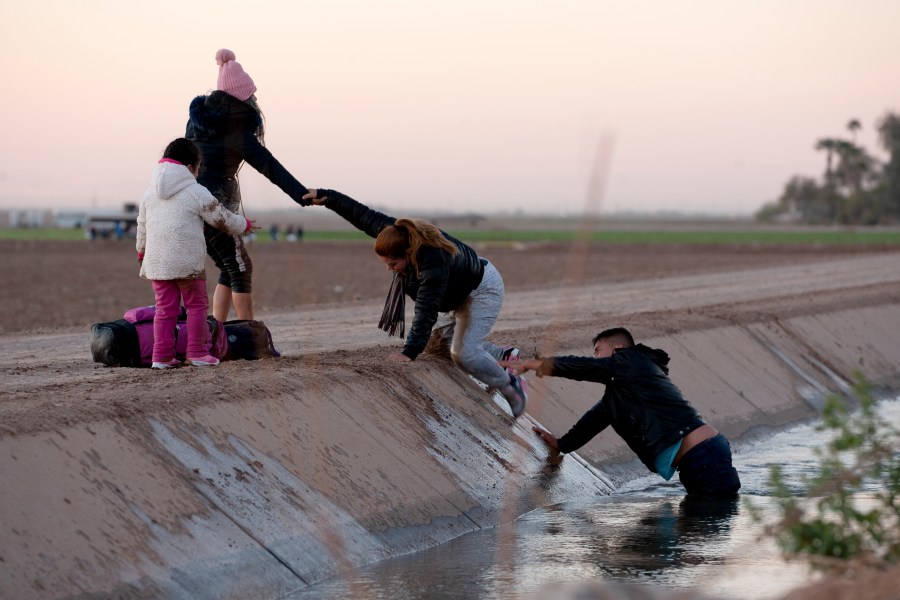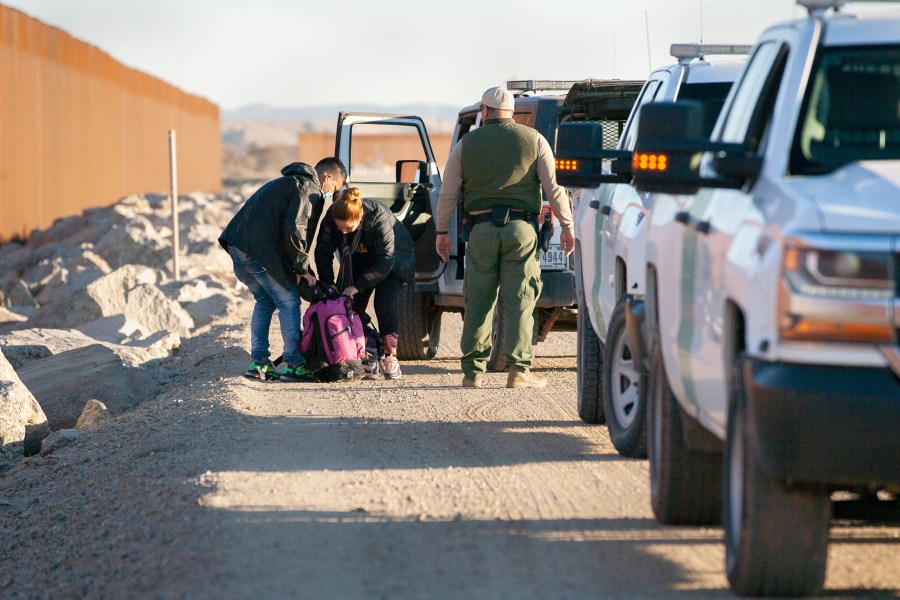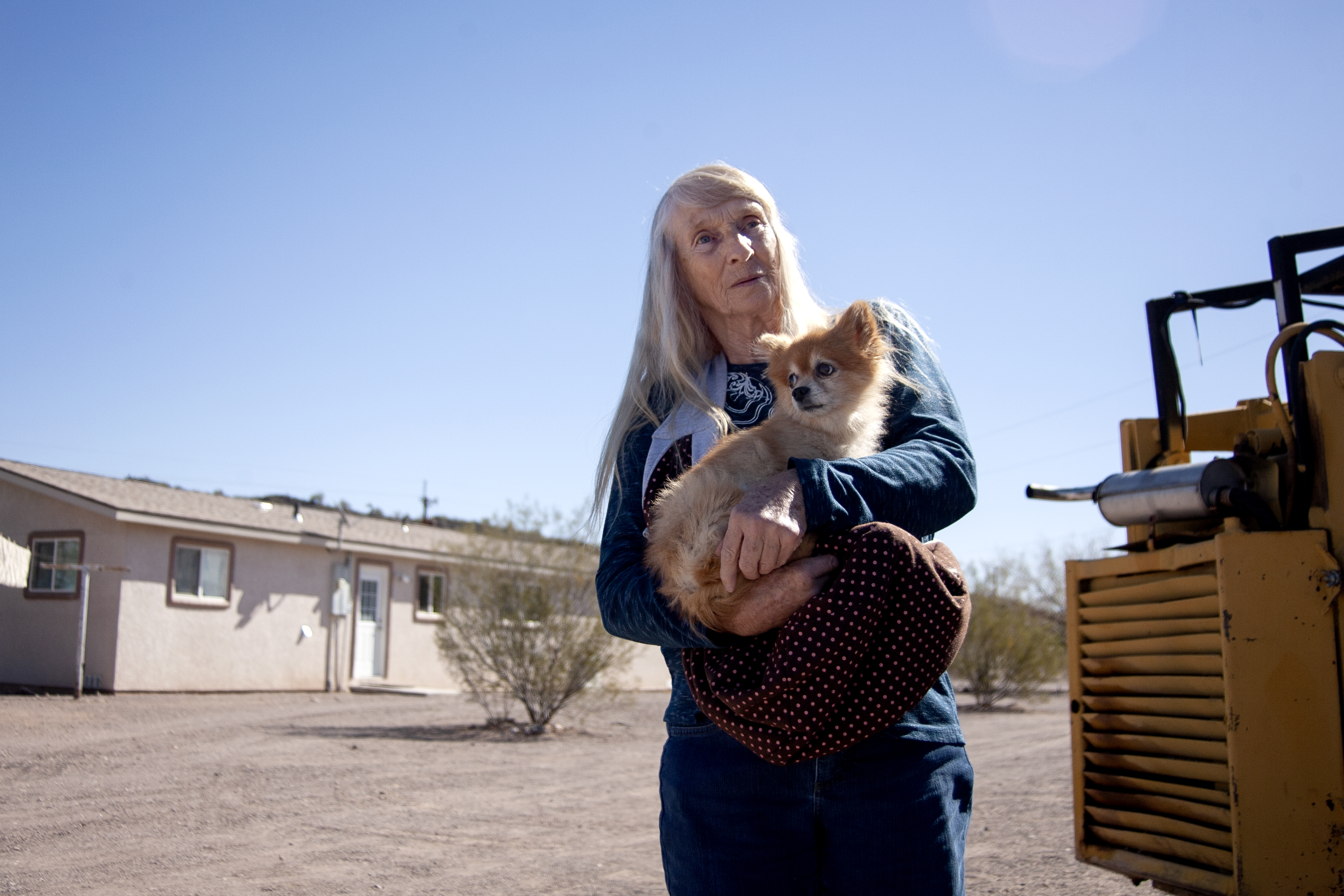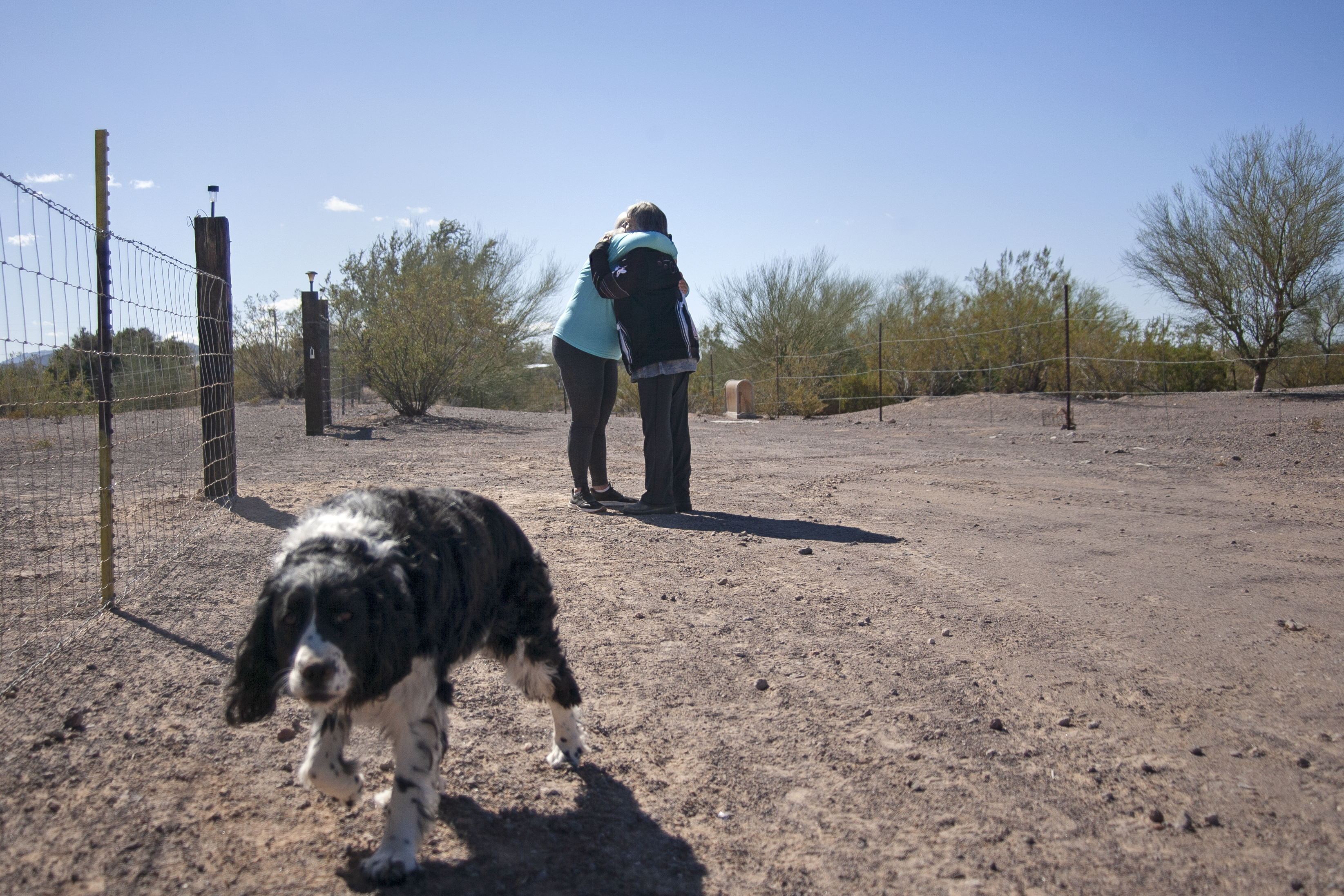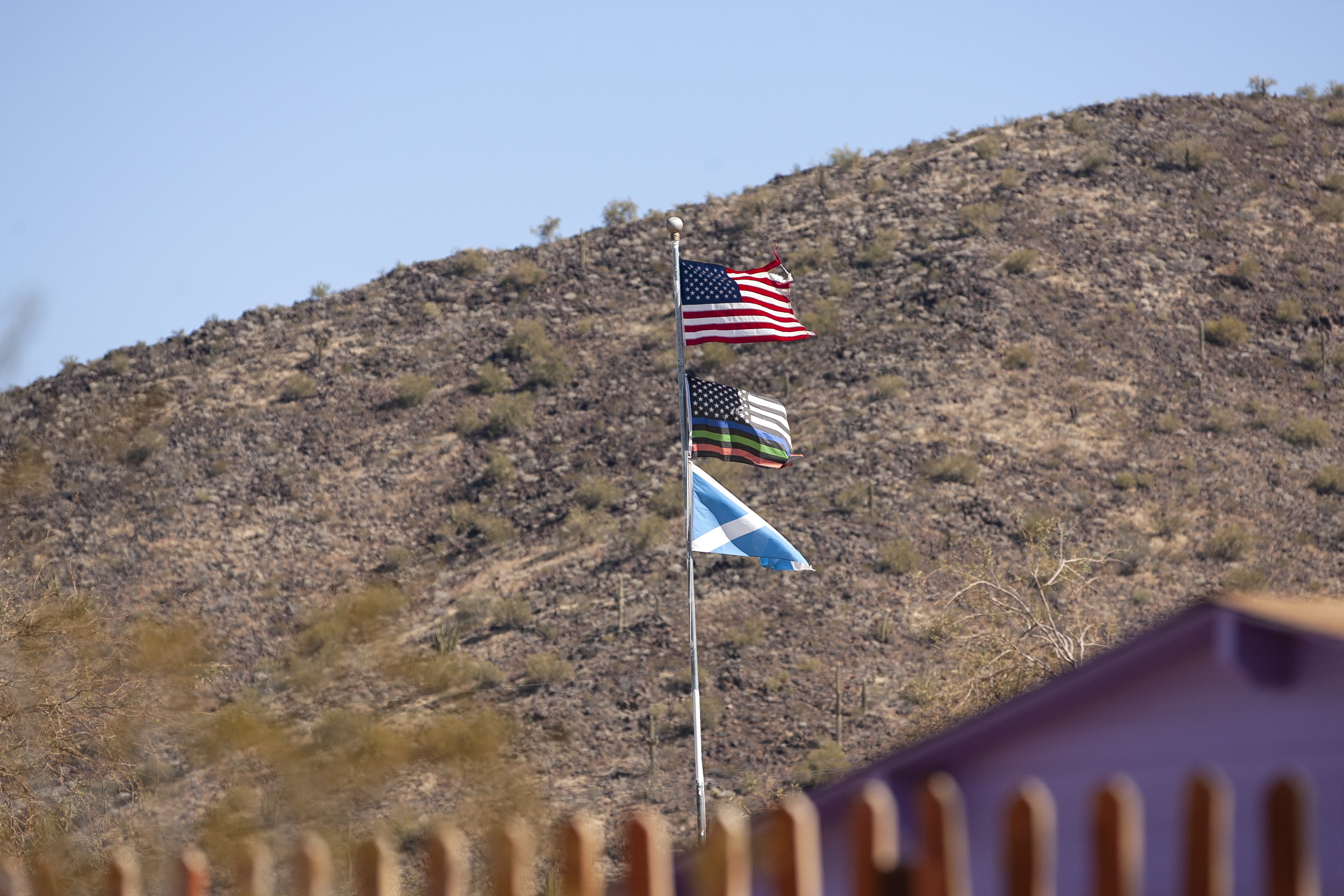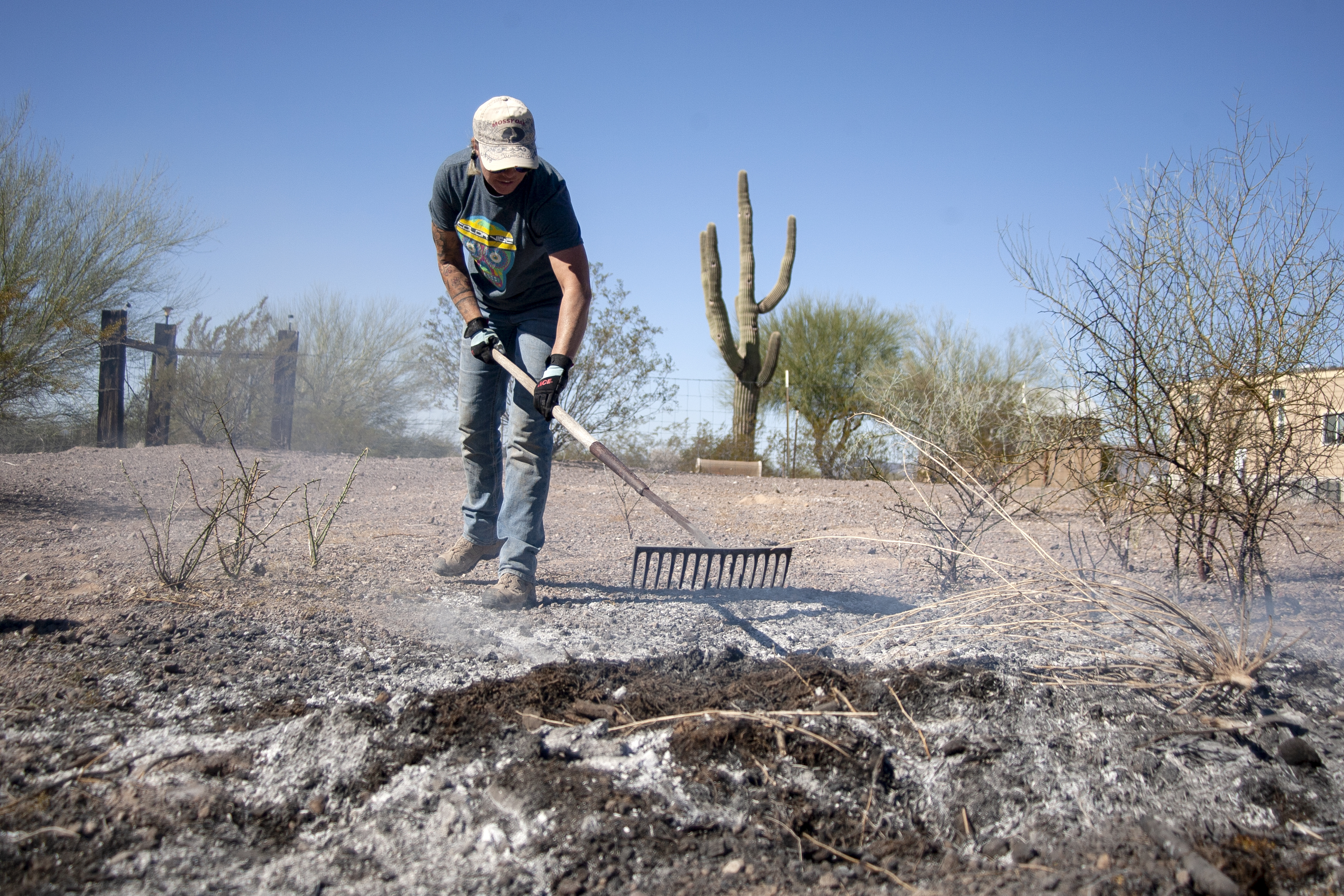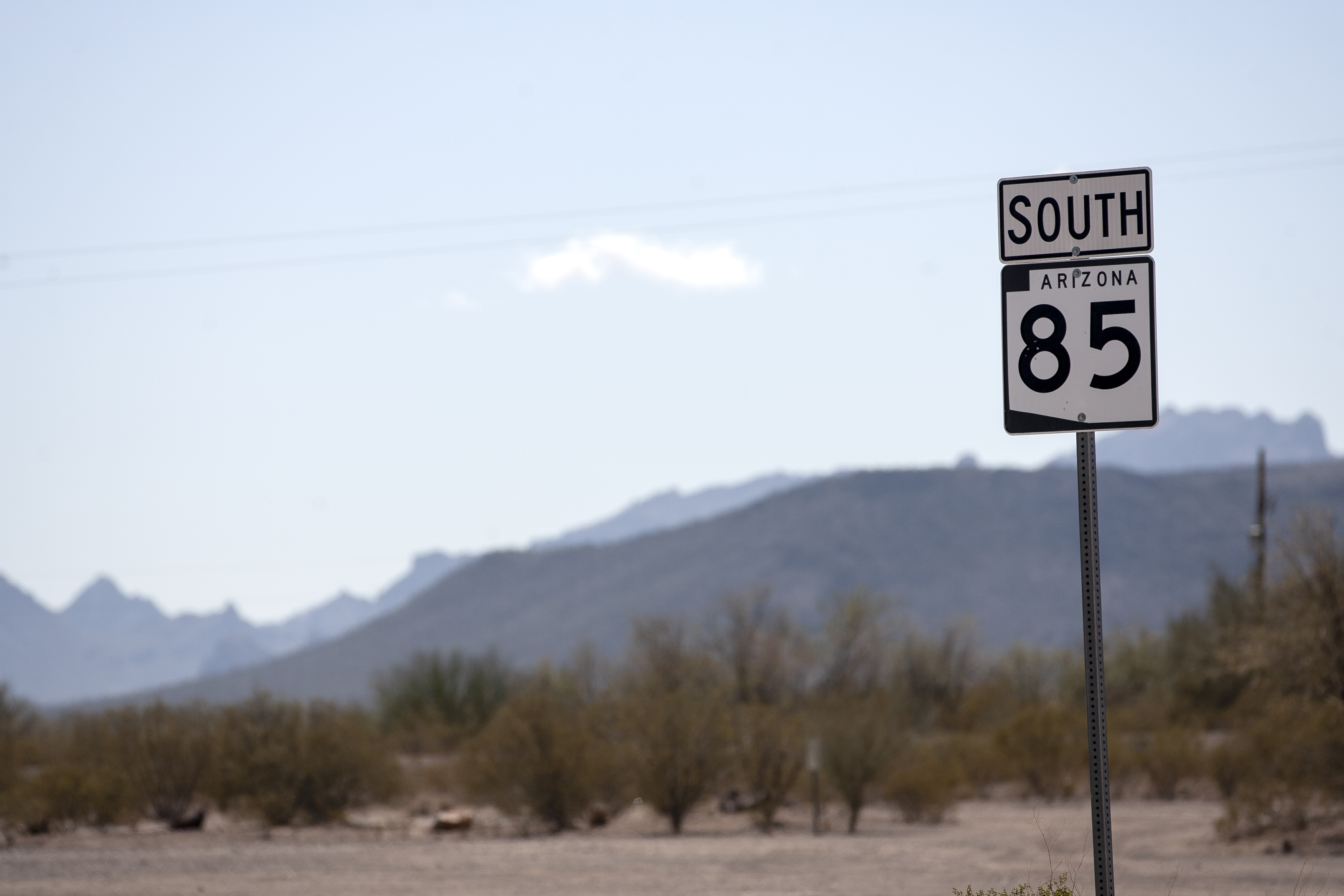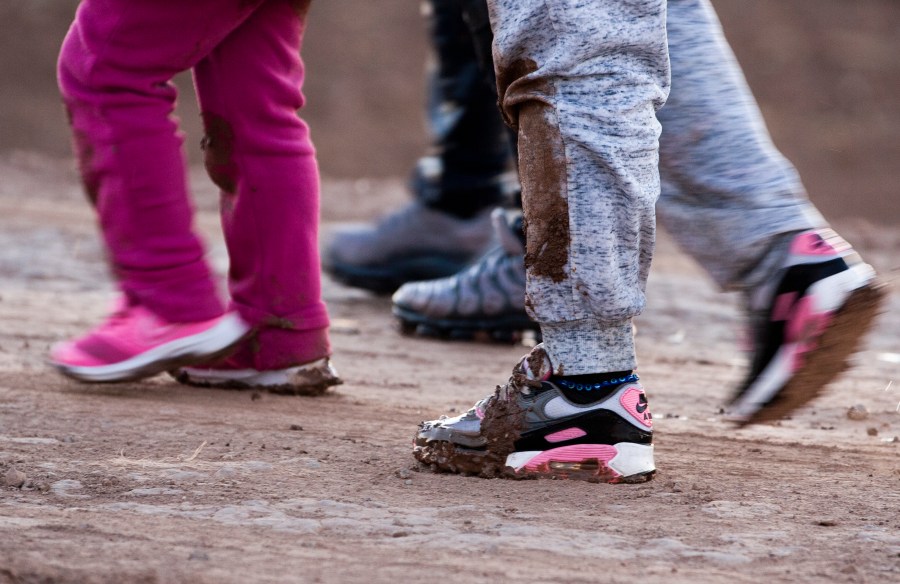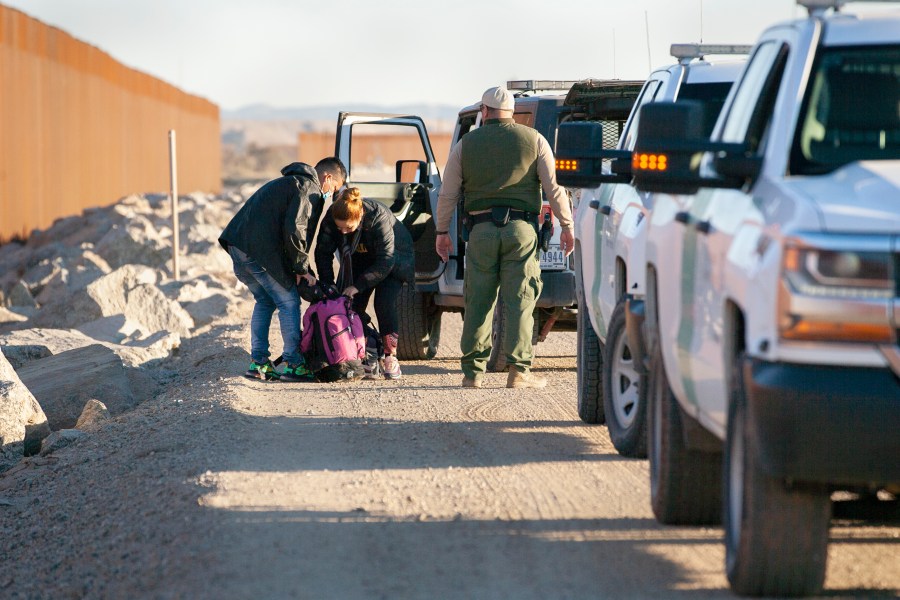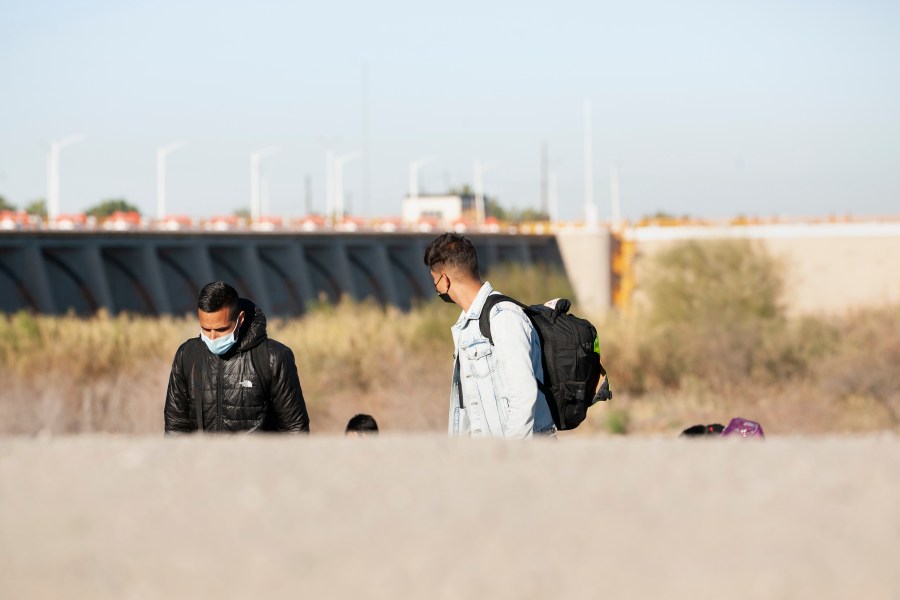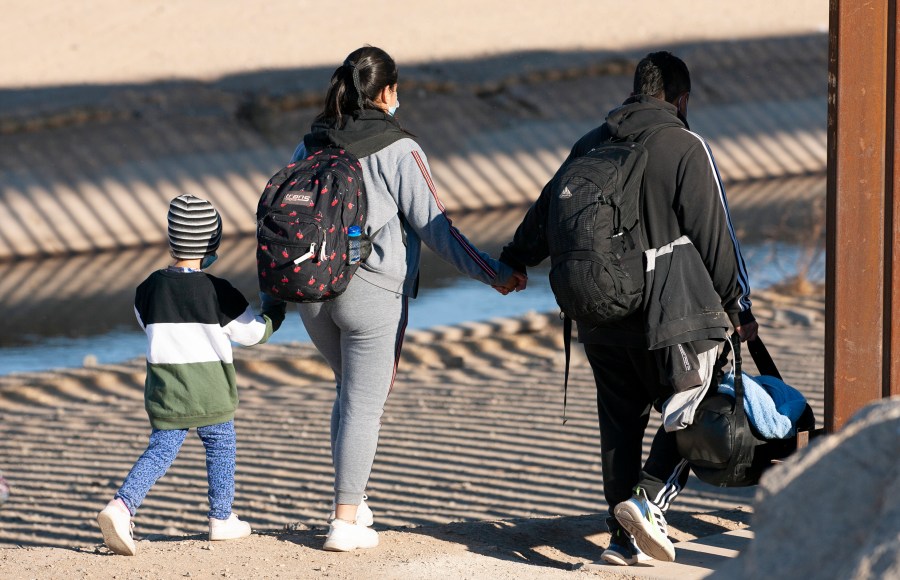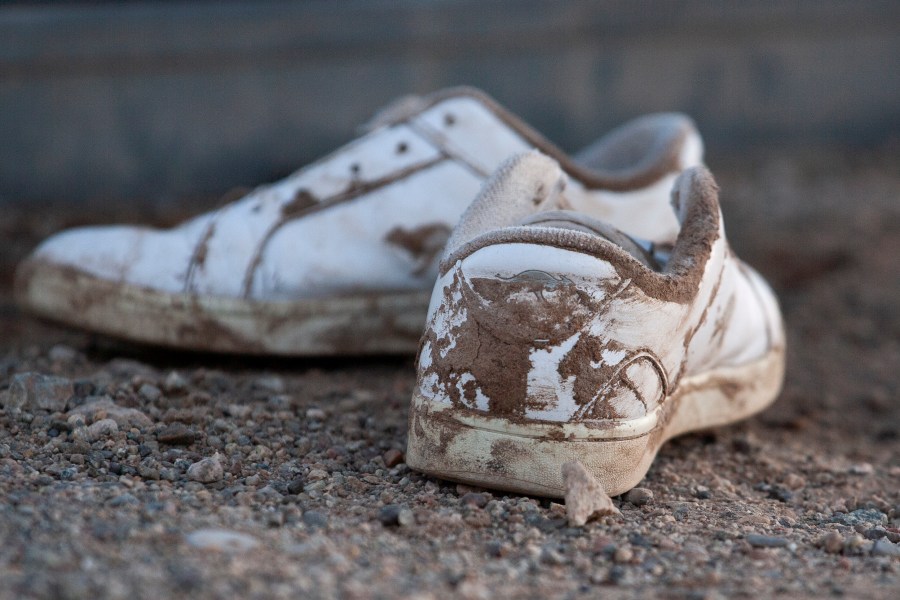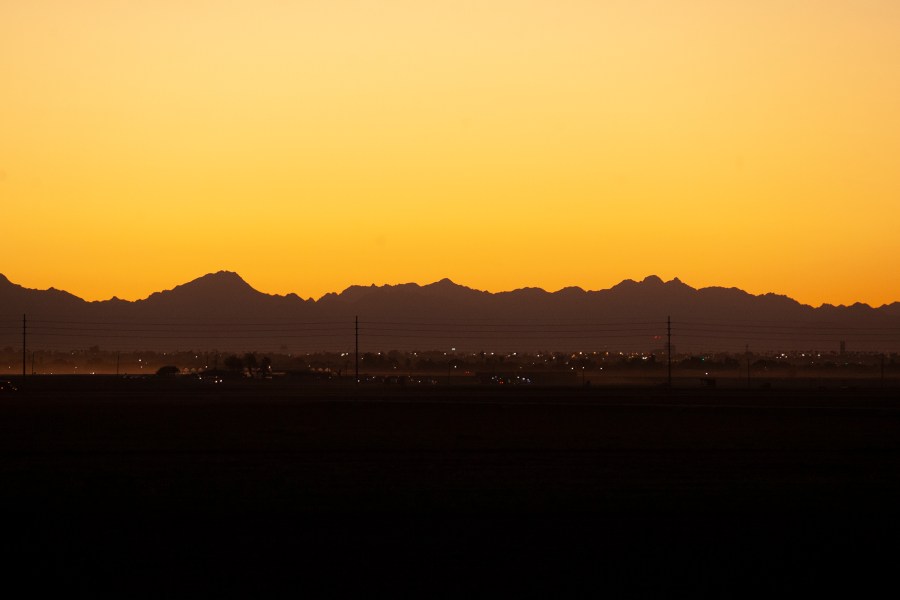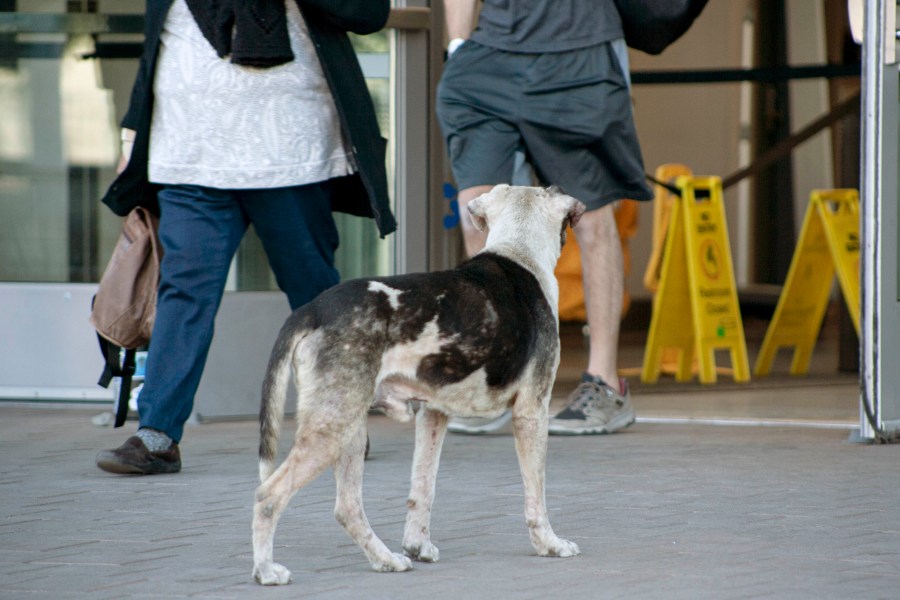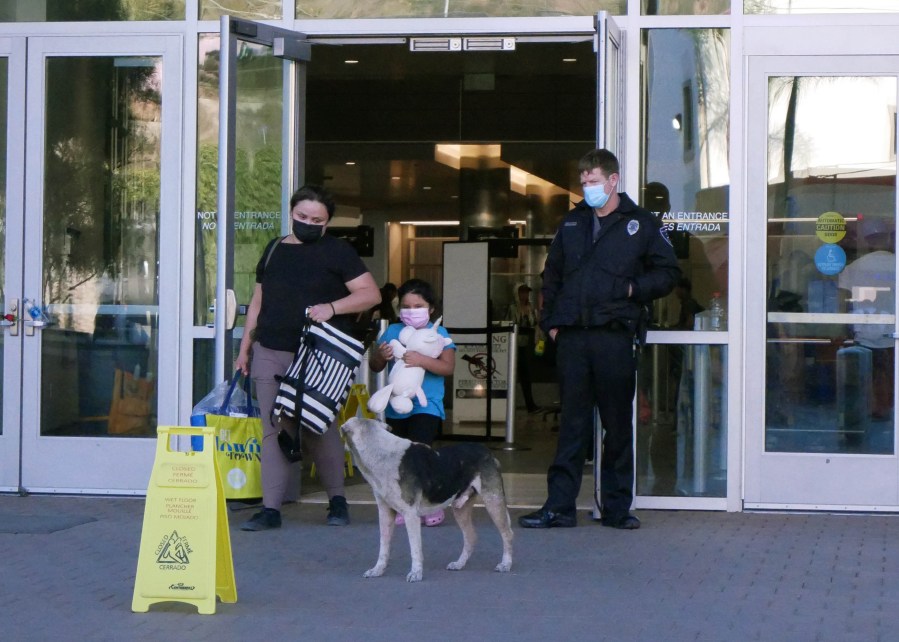(NewsNation Now) — NewsNation reporters Robert Sherman and Katie Smith are spending three weeks traversing the southern border — starting in San Diego, California, on Feb. 14 and ending in Brownsville, Texas, later this month — telling the stories of communities in crisis. The Border Report Live blog takes readers beyond the big headlines, providing context and insight into the lives of residents along the border. Sherman and Smith will be joined by Border Report correspondents Sandra Sanchez, Julian Resendiz, and Salvador Rivera to provide regular updates during the trip. All times are Central.

The toll border-crossing ticks are taking on U.S. ranchers
Friday, Feb. 25
Location: Zapata, Texas
It’s not just people who cross the U.S.-Mexico border.
We spoke to rancher Renato Ramirez about how ticks hitch rides on wildlife that cross the border and cost Ranchers out-of-pocket expenses for disease prevention and treatment.
Ramirez, who’s also the president of the IBC-Zapata bank, operates thousands of acres of ranch land in Texas. On Thursday, he took us to one of his ranches in Zapata. The town of about 5,700 rests in the Rio Grande Valley on the shore of Falcon International Reservoir.
With a pair of binoculars, Ramirez looked past the reservoir Thursday and identified a herd of cattle wandering the Mexico side of the border.
“That depth is probably 6, 8 feet. The cattle cross and they bring in the fever tick,” he said.
Texas Cattle Fever greatly harmed the cattle industry in the U.S. until the beginning of the 20th century, according to the USDA. The ticks that carry the disease were largely eradicated from the U.S. by 1943, but cattle fever ticks still thrive in Mexico, the USDA reported.
Ramirez found two ticks on his own herd five years ago and it’s cost him more trouble than he initially wanted to talk about. Throughout the morning, however, Ramirez explained how ticks from Mexico will settle on deer or cows that then find their way across the border, allowing the disease-carrying insects to infect American herds.
The location of Ramirez’s ranch dictates that he check his cattle for ticks every 90 days and treat them with a topical insecticide.
The insecticide “dipping vats” as they’re called are government-provided, but the care also comes with out-of-pocket expenses for the ranchers. Locating the cattle on ranches that are often several thousand acres is a feat of its own. They then need to be transported, and some are occasionally lost along the way, Ramirez said.
There’s also a mandatory 48-day wait period to remove any medication from the animals’ systems before they can be sold.
All that said, Ramirez doesn’t want a wall built near his property.
He hopes to retire soon, and a wall would block him from the view that he’s been looking forward to.
The only real solution is to put out the anti-parasite-laced corn and molasses that the government provides to ranchers, he said. The idea is that wildlife will eat the medicated food and unknowingly be treated for potential disease as they travel.
Other residents, including a county judge, also weren’t in favor of the wall.
According to them, the reservoir acts as a large enough barrier on the border. And although migrants have occasionally damaged ranch property, locals told us that crossing through the ranches without a map can be dangerous for migrants, who generally don’t intend to do any real harm to the land.
For another perspective on the environmental impact of a border wall, take a look at this story that Robert Sherman and I did last week.
— Katie Smith
‘Rivers of trade’ flow through Laredo port
Wednesday, Feb. 23
Location: Laredo, Texas
The World Trade Bridge commercial port of entry in Laredo is at the crossroads of commerce for Mexico and South Texas and plays an important role in the supply chain for both countries.
About 7,000 commercial trucks pass through this port of entry every day — 2.5 million per year, bringing in $139 billion in imports per year to the United States. Twice it has surpassed Los Angeles as the No. 1 port of entry for goods into the country.
“We think of Laredo as the rivers of trade,” Flores said, “extending to all parts of the United States.”
But with each truck heading North also comes the risk of drugs and other illegal items also coming across the U.S. border.
That is why officials are testing a pilot program at this bridge, called the multi-energy portal, that involves dozens of computerized scanning devices and U.S. Customs and Border Protection personnel who analyze the data to locate and confiscate illegal goods.
CBP Laredo Port Director Albert Flores on Wednesday gave us a tour of the expansive port of entry. He said the new pilot program allows CBP officers to scan inside cargo and detect minute differences in packaging or other “anomalies” that might not have been detected by the human eye.
They have located drugs smuggled in the bed of cabs, in fire extinguishers and building materials.
The program is being tested here and in Brownsville, Texas. If successful, it will expand to the rest of the United States, Flores said.
— Sandra Sanchez/ Border Report
About those robot dogs
Wednesday, Feb. 23
Location: Del Rio, Texas
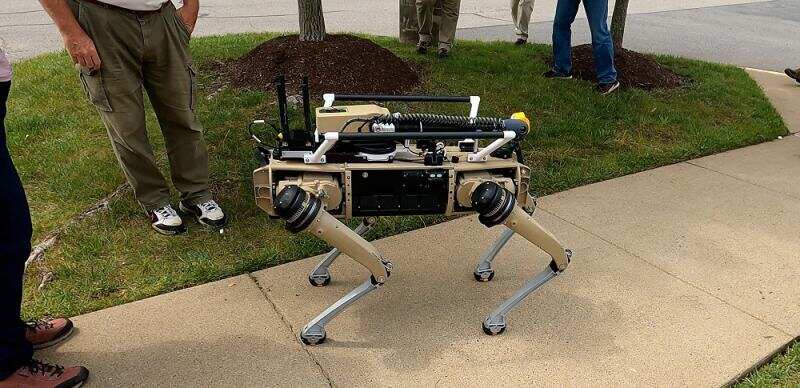
You might remember from a few posts back, I mentioned robot dogs potentially patrolling the border. The emerging technology is part of an effort to improve Border Patrol’s ability to monitor the southern edge amid its oftentimes harsh landscape, extreme temperatures and other threats.
The Science and Technology Directorate is providing CBP with four-legged, 100-pound mechanical reinforcements capable of traversing sand, rocks and hills.
If these robot dogs look or sound familiar, you might have seen something similar in pop-culture works of science fiction such as Ray Bradbury’s “Fahrenheit 451” or the TV show “Black Mirror.”
CPB’s dogs first went to a facility-in Lorton, Virginia, where video and sensor packages were mounted to the quadruped machines. Real-time video and other data are sent back to the human operating or monitoring the robot through a laptop or handheld remote.
From there, the robot dogs were sent to El Paso, Texas, for additional testing in harsh environments, tight spaces, high heat and low oxygen.
Despite their novelty, the mechanical dogs haven’t been received with open arms. The director of the Southern Border Communities Coalition has called the robots a waste of taxpayer money and criticized the government’s further militarization of the border, CNN reported.
— Katie Smith
En route to Laredo, Texas
Wednesday, Feb. 23
Location: Del Rio, TX
We’re making our way this morning to Laredo, home to the largest commercial land port on the Southern border.
The city’s multiple border crossings form one of 11 land ports along Texas’ 1,254-mile border with Mexico.
According to U.S. Census Bureau data analyzed by WorldCity, Laredo is the top inland port along the U.S.-Mexico border and the nation’s fourth-busiest port among more than 450 airports, seaports, and border crossings. It accounted for $205.88 billion in total trade with the world in 2020.
The area’s most valuable export, motor vehicle parts, increased 13.92% last year, according to the Laredo Economic Development Corporation.
The Laredo Sector encompasses 96 counties and includes 84,041 square miles of southwest and northeast Texas., according to the U.S. Customs and Border Protection.
The Rio Grande River acts as the southwest and international boundary.
— Katie Smith
goat for mayor
Tuesday, Feb. 22
Location: Lajita, Texas
The mayor of Lajitas in Texas is named Clay Henry and he is a goat.
Not the abbreviated title oft-used by sports fans for their favorite players — Greatest of All Time. No, Clay Henry is an actual goat.
I discovered him today in a wired cage on the roadside near the U.S.-Mexico border. There, people can drive by and watch the goat go about his mayoral businesses, tackling important matters like eating hay at sunset.
I apologize for not getting a picture of Clay (we only passed him briefly in the car on the way to another destination), but his legend is worth sharing.
The story of Clay Henry began in the 80s at a bar that would later become the Thirsty Goat Saloon (named after the original Clay Henry’s penchant for beer).
According to the National Parks Reservations website, Lajitas’ previous owner Walter Mischer had friends and politicians in town from Houston when they decided the town needed a mayor.
Much to Mischer’s dismay, one of the Houstonians was “elected.” If someone from Houston could be mayor so could a goat: and thus a political campaign between a human man and a beer-guzzling goat was born.
Clay Henry lost that first election but won the next time around. Others, including a dog and a wooden Native American statue, have tried to defeat the goat, but to no avail.
The goat famously loved beer so much so that people would travel to bottle-feed the mayor.
To be clear: Clay Henry is not immortal. He died in the 90s at the hands (hooves?) of his son Clay Henry Jr., who has also since died.
There have been Clays before this one, and no doubt there will be more after. But they will all be Clay Henry: Mayor of Lajitas, Texas.
So maybe he is the greatest of all time after all?
— Katie Smith
On to Alpine
Feb. 22
Location: Alpine, TX
Our Tuesday started in Alpine, Texas, where we’ll be meeting with Brewster County Sheriff Ronny Dodson. The community of about 6,000 sits about 70 miles from Big Ben National Park and is struggling to keep up with the rising number of unauthorized border crossings that picked up at the start of the Biden administration.
Texas Gov. Greg Abbott even called on the National Guard to help manage the influx of people crossing the border, but Dodson tells us their presence hasn’t been much help. That’s because the National Guard troops, much like the local sheriff’s officers, don’t have the authority to detain someone based on their immigration status.
What local police can do is detain someone suspected of aiding in unauthorized crossings — an undertaking that’s quickly filling up the bed space at the county jail.
The sheriff harbors a unique opinion about a border wall, though. While border patrol officers in other cities we’ve visited are advocates for the completion of President Donald Trump’s border wall, Dodson says it would hurt their local economy, which relies on tourism that would be disrupted by the wall.
Until a better solution comes along, Dodson is relying on technology like street cameras and a working relationship with border patrol in an attempt to stay on top of unauthorized crossings.
The Big Ben sector has seen more than 12,000 unauthorized crossings to-date this fiscal year. That represents more than a 62% increase from last year, and according to Dodson it’s an underestimate.
On the other side — Crossing into Juarez
Feb. 19-20
Location: Ciudad Juarez, Mexico

On Saturday, our team crossed the border for the first time in El Paso, entering Ciudad Juarez, Mexico. The city has been near the top of the list of most dangerous cities in the world in the last few years based on its homicide rate of 104 murders per 100,000 inhabitants in 2019 and 109 in 2020.
The longstanding violence and cartel presence has tarnished the Mexican city’s reputation, particularly among residents in nearby El Paso, one Jaurez resident told me. The city is safer now than it was ten years ago, but many families still haven’t recovered emotionally from the cartel’s damage, he said.
Fast facts:
- Recently, the area experienced a drop in homicides (Juarez closed 2021 with 1,420 homicides – a 14 percent decrease over 2020)
- Nine out of 10 killings in Juarez last year were drug-related and more than a third of the victims were men and women between the ages of 18 and 29
- Most were killed execution-style, often with a bullet to the head or on the losing end of a barrage of bullets, according to an analysis released by the Chihuahua Attorney General’s Office
Crossing over
Driving across the Paso Del Norte International Bridge, the red, white and blue flags becoming Mexico’s green, white and red were the first indication that we were leaving the country. This was one of the most highly-anticipated portions of our trip — we’ve experienced the US side of the border in California, Arizona and New Mexico. But now, we’re going to the other side.
Ciudad Juarez is the largest city in the Mexican state of Chihuahua. El Paso and Juarez are referred to as “sister cities” — a term that is not uncommon along the border. But with Juarez boasting more than 1.5 million residents compared to El Paso’s roughly 700,000, Juarez is unquestionably the “big sister” here.
Coming across the bridge, the magnitude of the city that sprawls up into the nearby mountains becomes quickly apparent.
Our first surprise came quickly. We drove to the other side of the bridge, drove up to a mechanical arm, a light turned green and we were permitted into Mexico.
That was it.
No passport check. No conversations with Customs. No explanations about whether we’re here “for business or pleasure.” Nothing. Comedian Jimmy Yang once said it was more difficult for him to get into a Costco than Mexico when he visited Tijuana. I’m inclined to agree with that quip now.
Our guide told us only one out of every ten cars gets inspected, and the expectation is that the average traveler operates under the “honor system.”
Juarez’s reputation of being one of the most dangerous cities in the world precedes itself. Our guide told us that, like most cities, it simply depends where you are. If you stay in public, well-traveled places that are havens to tourists, you should be fine. If you’re looking to buy drugs from the cartel? “Good luck” was his response. Point taken.
Overflowing migrant shelter
The main focus of our trip into Mexico was to visit a migrant shelter. The pastor who runs the shelter told us hundreds of people come through every month as they await the processing of their asylum claims. Here, we saw families with two parents and two to four children and single moms all desperately seeking a new opportunity.
One who spoke to us tearfully recounted the story of how she left Guatemala with her young child and rode in a tractor-trailer north. While in Mexico, the trailer flipped over. Her face, still covered in a scar, shuddered as she recalled every detail. She is trying to get to Pennsylvania to be with her husband.
Another woman, also a mom, said she was escaping domestic abuse back home and didn’t feel safe returning. Her claim to asylum was denied by the US, but she told us she is appealing. Her goal is to get to Alabama to be with her family.
Then there was a Mexican man with his family who made it clear he never had any interest in going to the United States. But, the cartels had gotten unbearable and made threats against his family. He claims the cartels have been asking about him at other shelters. He says he and his family are hoping to get to California.
Most of the people in the shelter have taken a long road to get to where they are now. Some have traveled thousands of miles, some have suffered tremendously, some arrived without proper clothing or shoes. How long they remain in the shelter as their claims are processed remains to be seen — the pastor says some have been there a couple of days, and others have been in their care for up to two years.
Also surprising — the variety of countries people have come from before finding shelter here: the expected Mexico, Guatemala, Honduras, and El Salvador. But Turkey? Ukraine? Iraq? Taiwan? Migrants from 22 separate countries of origin have been represented at this shelter over the years.
Like we’ve found each step of the way along this cross-country border trip: everyone has a story.
—Robert Sherman
Welcome to El Paso
Over the weekend, the Border Report team arrived in El Paso, Texas, one of the westernmost parts of Texas and a critical city and port of entry on the US-Mexico border.
More important for our visit, it combines with Las Cruces, New Mexico, and Mexico’s Ciudad Juarez to form Paso Del Norte. There are six official border crossings in El Paso, which fuel economies on the Mexican and American sides. Easily 40,000 to 50,000 cars and pedestrians will legally cross into America via the El Paso area each day. It’s one of the reasons one of the bridges that serve as a crossing will get $600 million in infrastructure improvement funds.
But like all the areas of the border we’ve visited, El Paso has endured a wave of illegal crossings. Unauthorized border crossings were up 71 percent October through December compared to the same time in 2020. Also, our partners at Border Report pointed out that while migrant encounters in January were down 14 percent from December, year-over-year encounters almost doubled.
El Paso has also been a testing ground for new approaches to guarding the border. Most recently, El Paso tested robot dogs to patrol the border to support human border patrol agents.
— Katie Smith
Review: Week 1 of our border tour
Feb. 21
Location: El Paso, Texas
As we prepare for our second week of travel, I want to summarize what we’ve seen so far on this whirlwind tour. If you’ve never visited the U.S.-Mexico border before, you may not know that several of the U.S. cities we visited live in harmony with their Mexican counterparts.
Cross-border interdependence, conflict
That was the case in Nogales, Arizona, Why, Arizona, and Columbus, New Mexico.
In Columbus, US residents even relied on resources like Mexican dentist offices and restaurants to fill the gaps in their own community, which the former mayor said would dissolve without border crossings. They share schools, too. Each day the former mayor drives a school bus to the border to bring children who are U.S. citizens living in Mexico to their public school over the border.
From a broader perspective, the merging of cultures in each border town gave the cities unique personalities.
From the colorful architecture in New Mexico to the diverse restaurants and businesses in San Diego, each town’s proximity to the border was apparent.
That doesn’t mean there aren’t conflicts. Drug and cartel activity at the border is an ongoing struggle. U.S. Customs and Border Protection reported a 1,066% increase in the amount of fentanyl seized in the last fiscal year in south Texas.
During that timeframe, 87,652 pounds of narcotics — including 588 pounds of fentanyl — were seized at eight ports from Brownsville to Del Rio, Texas. The street value of the drugs is about $786 million.
Border crossings
In areas like Yuma, Arizona, border patrol officials told us they’re spread thin and lack the federal support to keep up with the more than 1,000 border crossings that take place each day. For now, officers use technology to help them cover more ground. Street cameras and censors under the road alert Border Patrol to crossings when they aren’t there to witness them first-hand.
The crossings we witnessed in Yuma stood out to me the most. Construction of the border wall that began during President Donald Trump’s administration and halted when President Joe Biden was elected, left large gaps that people use to enter the U.S. from Mexico. During our short time in Yuma, we saw families from places like Colombia and Peru pass through those gaps. They were often out of breath and exhausted from their travels. Some were children who sobbed as they entered the U.S. side with even younger children in their arms. Almost all of them were in search of border patrol to turn themselves in.
We did see a few groups who tried to evade border patrol. A small girl, about 2 or 3 years old, screamed “I can’t do it!” as she fell into the cold water of a canal that her family was struggling to cross on the U.S. side of Yuma’s border wall. They eventually made it through, only to be picked up by border patrol about an hour later.
Week 2 plans
As the week goes on, we’ll continue to bring you live dispatches from the border towns that don’t ordinarily dominate the national conversation about immigration, despite its direct impact on their communities.
We’ll remain in Texas as we finish the second half of our trip, making stops in Alpine, Del Rio, Laredo Brownsville. Continue to check back here for updates along the way.
— Katie Smith
A tale of two cities
4:09 p.m., Feb. 18
Nogales, Ariz.
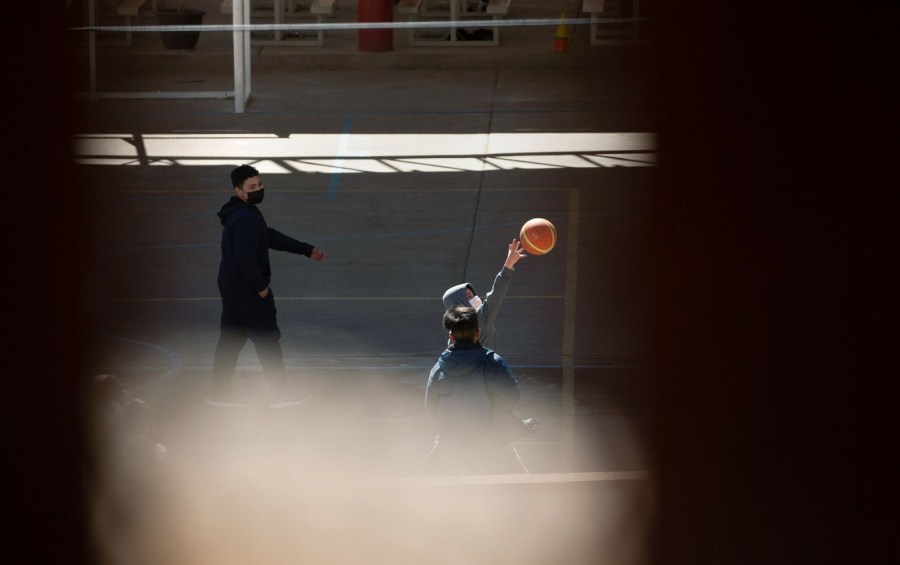
During our time in Nogales, Arizona, we met Manuel Castro, a 55-year-resident of the U.S. town which shares a border wall with a Mexican city of the same name.
Manuel told us that he believes both Nogaleses are safer than their reputations let on and said everyone in his town knows one another. That became evident when everyone from neighbors to the local FedEx driver stopped to say hi to Manuel during our interview.
The wall in Nogales is more elaborate than those we’ve seen in other border towns. This one has razor wire running across the top and extra fencing between the wall’s iron bars. Locals told us those measures prevent people from either climbing over the wall or passing things through the holes. A man visiting from Canada said he thinks the wall in Nogales is “overkill.”
It’s worth noting that this wall pre-dates the Trump administration. According to a New York Times report, both Nogaleses went to war for a day in 1918 after an American guard shot a Mexican citizen at the border crossing. After that, both governments agreed to construct a permanent chain-link fence between them.
— Katie Smith
Americans weigh in on border issues
11:11 a.m., Feb. 18
Gila Bend, Arizona
NEW THIS MORNING: NewsNation polling finds 61% of respondents believe the country is “on the wrong track”, the nation is mostly split on a US-Mexico border fence, and 37% believe legal immigration quotas should decrease. Robert Sherman and the NewsNation team asked people along the border what they felt about the poll results.
Originally tweeted by Robert Sherman (@RobertShermanTV) on February 18, 2022.
The town called Why
2:42 p.m., Feb. 17
Why, Arizona
Today we’re in Why, Arizona, a town about 30 miles away from the border. The town’s steady population is about 148 people but that number fluctuates with the seasons, locals told us.
Why is it called Why?
The town got its curious name from the Y-intersection that formed where the two main roads connected. State law at the time, however, required that town names have at least three letters so the founders opted for the more philosophical spelling.
There are two main businesses in town — The Why Not Store oand Granny’s Kitchen. Residents say the local economy relies on the people who pass through, including those who pass through the nearby border crossing in Lukeville.
— Katie Smith
Read the full article from Katie Smith and Robert Sherman here.
On to Why
9:30 a.m., Feb. 17
Location: Why, AZ
Good morning! Today we’ll be traveling from Gila Bend, AZ to the city of Why. Each of the border towns we’ve visited so far has been completely different from the next. Stay tuned as we explore this small town with an estimated population of of 167. pic.twitter.com/gqaQw0AKQm
— Katie Smith (@ksmithnwh) February 17, 2022
America weighs in: Grant undocumented immigrants a pathway to citizenship

Americans are largely divided on how to address immigration with a notable exception: A dominant majority — perhaps larger than ever before — supports a path to citizenship for undocumented immigrants already in the country, according to a new NewsNation/Decision Desk HQ poll.
The poll suggests that despite a crisis at the border with a growing influx of undocumented immigrants crossing into the country, momentum continues to grow for granting citizenship to those who are already here.
Nearly 70 percent of Americans support that path to citizenship, according to the NewsNation poll, which surveyed more than 1,000 registered voters over the weekend. Generally, in the past, blanket support for a path has gone no higher than the high 50s.
Read the biggest takeaways from the poll here.
Full report: See all the poll questions and results here.
Americans want more border security funding but are split on what it would look like
5 ways for undocumented persons to gain US citizenship
Majority in NewsNation poll say country on wrong track
— Tulsi Kamath, Managing Editor
New stats
BREAKING: Just obtained by @NewsNation from a federal court filing:
— Robert Sherman (@RobertShermanTV) February 16, 2022
January 2022 Migrant Statistics from @DHSgov
Migrant apprehensions: 153,941
Title 42 expulsions: 78,486
Applicants for Admission: 75,455
Migrants Released into US: 62,573 (Releases + Paroles) pic.twitter.com/mhn1IYUHvh
Bicentennial cacti, wildlife endangered by border wall
6:15 p.m., Feb. 16
Location: Lukeville, AZ

The debate over the ethics and efficacy of a U.S.-Mexico border wall aren’t only about immigration. Wildlife advocates are raising concerns about the wall’s impact on the environment and highly endangered animals.
A portion of the wall — construction of which began during President Donald Trump’s administration — cuts through Organ Pipe Natural Cactus Park in Southern Arizona.
Proponents of the wall say it’s a crucial step toward securing the border. However, environmentalists continue to raise concerns that the barrier would disrupt the migration patterns of endangered animals and render some natural areas impossible to restore.
Read the full report from Robert Sherman and Katie Smith here.
— Katie Smith, Robert Sherman
Children crossing the border alone
5:45 p.m., Feb. 16
Location: Lukeville, AZ

During our stay in Yuma, we saw groups, large and small, crossing the border into the U.S. Many had small children. Other groups consisted only of children.
According to the Council on Foreign Relations (a nonprofit think tank based in the U.S.), the immigration authorities encountered nearly 15,000 unaccompanied minors at or near the U.S.-Mexico border during the last fiscal year. That number is an all-time high, even though it temporarily slowed down in October.
Guatemala, Honduras and Salvador are some of the top countries of origin among unaccompanied migrant children. Their travels are fueled by struggles with poverty, crime, and natural disasters, according to the U.S. Department of Health and Human Services.
Read the full report from Katie Smith here.
— Katie Smith
Wrapping up in Yuma
10:28 a.m., Feb. 16
Location: Yuma, AZ
COVID-19 changed how cbp handles apprehensions
6:30 a.m., Feb. 16
Border Patrol’s approach to apprehending those coming into the United States illegally has changed dramatically during the coronavirus pandemic. What caused the change is the presence of “CDC Title 42,” which essentially gives CBP permission to deport any migrant without giving them a chance to seek asylum. See the full report on “Morning in America” here.
— Sydney Kalich, Senior Digital Producer
Photos from Yuma
7:29 p.m., Feb. 15
Location: Yuma, AZ
See photos from our second day of reporting in Yuma. We saw dozens of people crossing into the United States all day through gaps in the border wall that was left unfinished when the new administration took over last year. We’ll begin our day in Yuma again tomorrow before heading to Gila Bend, Arizona.
See Robert Sherman’s full report from the coverage of the day here.
— Katie Smith
Fast facts about the Yuma Gap
WATCH ABOVE: NewsNation’s Robert Sherman gives a live report from the Yuma Gap in Yuma, AZ, where local officials say about 1,000 people cross the border illegally each day
2 p.m., Feb. 15
Location: Yuma, AZ
We spent our morning in Yuma, Arizona, where we spoke with migrants crossing the border from Mexico to the U.S. as well as border patrol officers and city officials. The area is known as the Yuma Gap and acts as a daily entry point for people crossing the border, despite the border wall’s design to keep them out. But under the new administration, construction of the border wall (or fence, depending on the area) halted and long stretches of land that were supposed to house a barrier between the countries remain vacant.
Here are some takeaways from our reporting this morning:
- As of Tuesday, Yuma city officials estimate that more than 1,000 people enter the U.S. through the Yuma Gap each day. That’s not including those who aren’t stopped by border patrol.
- It’s not uncommon for people who have just crossed into the U.S. from this point to wait for border patrol or actively seek out U.S. officers. Officials tell us that’s because many prefer to receive a future court date sooner rather than later to fast-track their quest for asylum.
- 911 operators sometimes field as many as 100 calls each day for reports near the Colorado River Levee. Law enforcement is struggling to manage the strain those calls alone put on the system.
— Katie Smith
Walked for eight days
6:55 a.m., Feb. 15
Location: Yuma, AZ
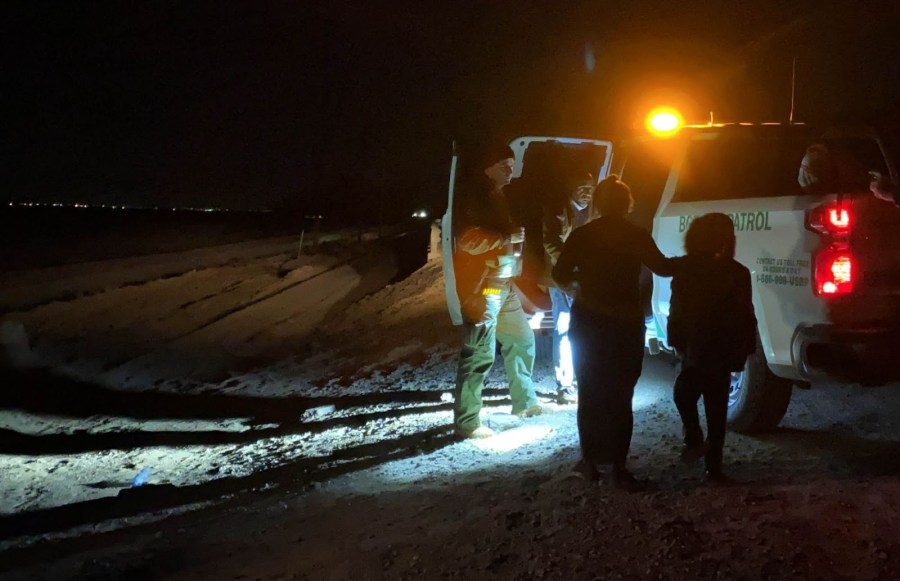
During an early morning shoot near Yuma Gap in Arizona, we met a family of three — two parents and a child. The family had just crossed into the United States through one of the many gaps in the border wall. The family said they were from Colombia and had been walking for eight days. They asked for help from U.S. Customs and Border Patrol and the NewsNation team was able to flag down a nearby officer to pick them up. The officer told us it’s not uncommon for people crossing at this location to seek out American police for assistance once they arrive.
WATCH THIS: While preparing for our live shots from the border fence in Yuma, AZ, this family of three from Colombia crossed into the US and came right up to us asking for help and water. They claim to be political prisoners seeking asylum, and asked us to flag down Border Patrol pic.twitter.com/6VblKbNwz3
— Robert Sherman (@RobertShermanTV) February 15, 2022
We’ll have the full story on the family and how their story fits into the larger picture at the Yuma Gap later today.
— Katie Smith, Robert Sherman
The dog that tried to cross the border
12:55 a.m., Feb. 15
Location: San Ysidro, CA
As our day at San Ysidro Port of Entry wound down, a dog trotted up the hill toward our truck.
A passing truck driver told me the dog came from Tijuana and is a regular to the area.
So-called Mexican street dogs are commonplace in Tijuana. According to SPCA International, Mexico doesn’t have a mechanism to treat the thousands of strays that roam the streets. Groups like the Humane Society of Tijuana and Dog Rescue Without Borders work to help adopt street dogs to new homes.
One officer at San Ysidro told me he suspects the stray is attempting to retrace his steps back to Tijuana.
After repeating laps around the port of entry, the dog came face to face with an officer guarding the building to the pedestrian crossing. He made his way inside but he returned soon after, unsuccessful.
— Katie Smith
Deported Army veteran returns home after 10 years
4 p.m., Feb. 14
Location: San Ysidro, CA

In the early hours of Valentine’s Day, Mauricio Hernandez-Mata crossed into the United States from Mexico at the San Ysidro Port of Entry in California, marking the Army veteran’s first return into the country since he was deported more than 10 years ago.
Read the full report from Robert Sherman and Katie Smith here.
Visiting a parent across the border
3 p.m., Feb. 14
Location: San Ysidro, CA
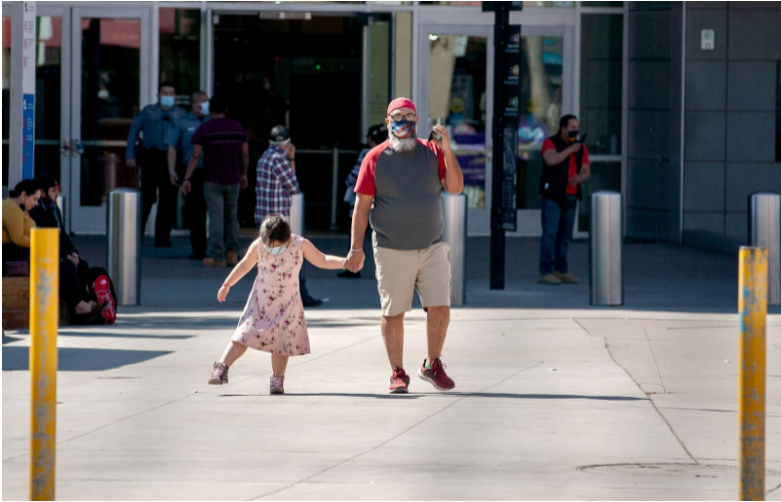
This afternoon, I met Javier Aguilar and his 5-year-old daughter Hinata as they returned to the San Ysidro Port of Entry in San Diego, California after a day of shopping in Tijuana. It’s a trip the father and daughter make regularly — usually to visit Hinata’s mother.
“Normally she (comes here), but with the pandemic, she has high blood pressure so she can’t be traveling a lot,” Aguilar said. For the past two years, he and Hinata have made the trip to Tijuana instead.
San Ysidro was bustling Monday afternoon with families, friends and people traveling on their own crossing to and from Tijuana and the U.S.
— Katie Smith
Follow the team on the road

Noon, Feb. 14
As the team sets off along the border, you can follow their journey in an interactive map that highlights locations, stories and unique photos they gather on the road. This map will be updated daily, starting with the team’s coverage in San Ysidro today.
— Tulsi Kamath, Managing Editor
Hitting the road
9:35 a.m., Feb. 14
Location: San Diego, CA
The team prepares to hit the road this morning with the goal of showing viewers the realities of border life. First stop: San Ysidro, the busiest border land crossing in the country. The NewsNation crew is heading out in a state-of-the-art border truck (it doesn’t have a name so if you have suggestions, let us know) that is equipped with several exterior cameras that can shoot the treacherous terrain of the border as we drive.
— Robert Sherman
Ready to head out
10:30 p.m., Feb. 13
Location: San Diego, CA
Sunday night, we, a group of NewsNation reporters, producers, and photographers have arrived in San Diego, preparing to travel the US-Mexico border for the next three weeks. Tomorrow, we will be taking a look at what life is like at the nation’s largest border crossing in San Ysidro where tens of thousands of people cross into the United States each day. From there, we’ll travel on through California, Arizona and Texas reporting about life on the border — the people who live there, the officers that patrol those areas, and what the national conversation about immigration looks like in the communities experiencing it first-hand. My colleagues and I will use this space to go deeper with context, anecdotes and behind-the-scenes insights so readers can get a clearer picture of what’s going on along the southern edge of the country.
— Katie Smith


